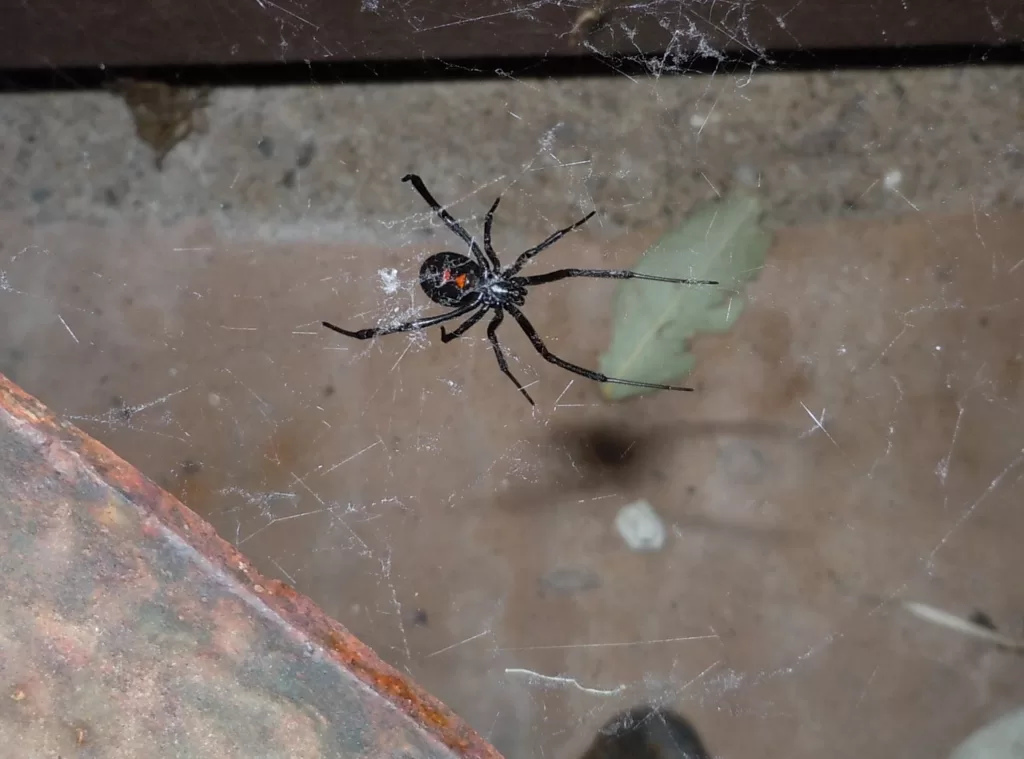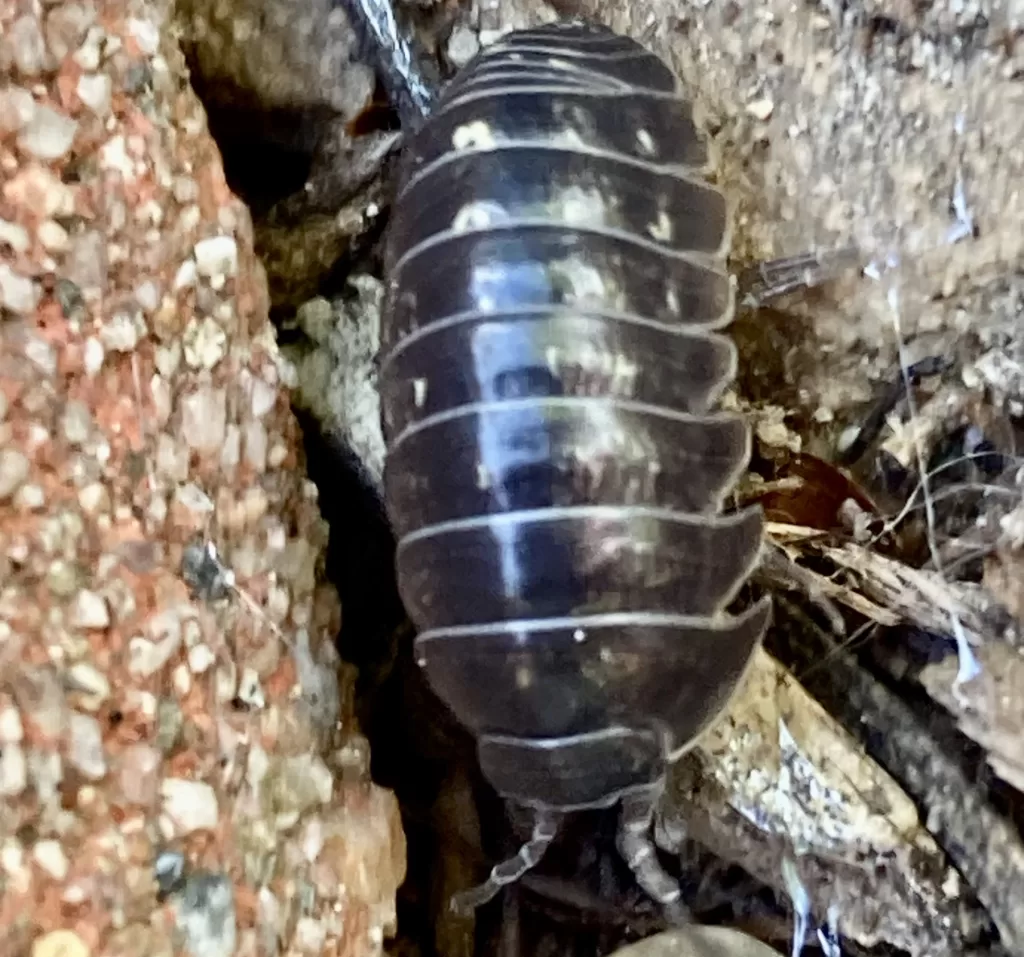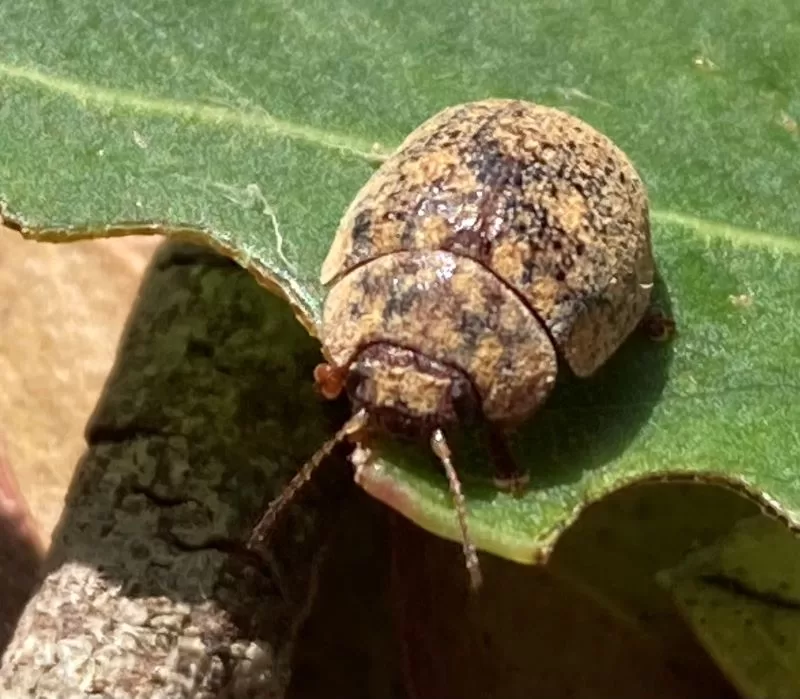
Synanthropic Insects Are at Home in Our Homes
It has fifteen pairs of improbably long legs, faceted eyes that can see the ultraviolet spectrum, and it’s a voracious hunter, pouncing upon its prey with amazing speed and subduing it with potent venom, but this isn’t an alien horror from the latest sci-fi tentpole franchise, it’s the humble house centipede. It makes its home in the laundry room or bathroom, and lives a quiet life preying on silverfish and spiders.

Many humans remain blithely unaware that Scutigera coleoptrata—the house centipede— shares their home. It’s a shy and retiring creature: nocturnal, quick to hide when the light is switched on. It’s also long lived. Individuals can live for more than a decade—provided they stay away from the cat or don’t end up squashed by unnerved humans. Despite its strange appearance, this is a benign creature that is a beneficial presence.
The house centipede originated in Europe and Asia has spread almost everywhere humans go. Not all non native species are invasive. So far, this widely traveled centipede has not become a problem in the wild, preferring to live in the shelter created by its unwitting human landlords. It’s one of numerous species that make their home alongside humans, whether we are aware of their presence or not.
An astonishing number of spiders, insects, and other invertebrates live in and around our homes, from the most remote and rustic cabin to the tallest skyscraper. There’s a special word for the species that make their home in our homes—synanthrope. In Topanga, where nature is right outside the door, it’s not surprising that a wide variety of synanthropic species make themselves at home in our homes.
The list of synanthropes is long and includes mammals like raccoons, bats, and mice, but invertebrates are the most numerous synanthropic species. Among the household insects are some extremely strange creatures. The house centipede, with its crazy long legs, zippy zebra stripes and floating movement is easily one of the weirdest looking bugs, but the solifuge, or wind scorpion, runs it a close second. This lightning fast member of the order Solifugae is an effective and deadly hunter that preys on species humans regard as pests. Its formidable jaws, or chelicerae, have given it an undeserved reputation for viciousness. While it can reportedly deliver a painful bite if threatened, the wind scorpion is only deadly to silverfish and spiders, and is harmless to people and pets.

Eric R. Eaton is the author of Insectopedia, and Wasps: The Astonishing Diversity of a Misunderstood Insect. He is also a contributing editor to the invaluable online resource bugguide.com. He writes, “Should a solifuge ever stop moving, the second thing you notice is the size of its jaws…they have the largest jaws for their size of any terrestrial invertebrate.”
Eaton stresses that, despite those formidable jaws, the solifuge is a non-venomous animal.
Solifuges are also known as solpugids, sun scorpions, and camel spiders, but they aren’t scorpions or spiders, although they do belong to the order Arachnida.
There are more than 2,000 known species of Solifugae, and they can be found on every continent except Antarctica and Australia. The species that turned up in the author’s laundry room—and inspired this article—is a member of the Eremobatidae family—possibly E. pallipes, the pale wind scorpion. The indispensable field reference Insects of the Los Angeles Basin lists seven native species, and there may be more.
Like the house centipede, the wind scorpion preys on species that humans consider to be pests. It’s a benign presence in the garden, and can be easily removed from the house using a glass or jar and a sheet of stiff paper—assuming it holds still long enough to be captured.
Solifuges are unforgettable—their strange appearance makes them stand out, but there is a mundane presence in almost every home that is, in its own way, equally formidable. It routinely captures prey many times its size, mummifying it in a shroud of silk and sucking the life out of it. Cellar spiders appear frail, their long legs are almost translucent. These small members of the family Physocyclus are capable of capturing moths 10 times their size, and subduing beetles, earwigs, and even bigger, stronger spiders, including black widows.
Popular urban legend states that the cellar spider has highly toxic venom. However, a 2019 study published in the journal Frontiers in Ecological Evolution dispelled the myth. Surprisingly, it was the first time the cellar spider’s venom potency was formally studied. The research team, led by Lewis and Clark College spider specialist Pamela A. Zobel-Thropp, found that “Documented bites on humans make clear that while these spiders can bite, the typical result is a mild sting with no long-lasting effects. Together, the evidence we present indicates pholcid venoms are a source of interesting new peptides and proteins, and effects of bites on humans and other mammals are inconsequential.”

The Western black widow spider, Latrodectus hesperus, does deserve her reputation for potent venom. Females produce a powerful neurotoxin that can potentially send a human to the hospital, but this is a shy, mild mannered spider that usually just wants to be left alone.
Black widows thrive alongside humans, making a home in the wood pile, at the back of the garage or even the back of a closet or kitchen cupboard.
Female black widows build untidy webs of strong, sticky silk, and lay their distinctively fuzzy, round egg sacs in dark corners. The males are smaller, less venomous, and really do run the risk of being consumed by the females, but only when food is scarce.
The Western black widow is a native species in California, but it is being displaced in parts of Los Angeles County by the non-native brown widow, Latrodectus geometricus. Brown widows originated in Africa and were first detected in Southern California in 2003. Since then, the brown widow population has exploded and expanded. In an article on the Natural History Museum of Los Angeles County blog, biologist Greg Pauly describes it as, “an ecological drama [that has] been playing out at a shocking rate.”

It’s unclear what the impact will be on the local ecology, but it’s clearly bad news for the black widow, and it’s not the only member of the widow family that is a potential threat to the native species. The noble false widow, Steatoda nobilis, is another introduced species that has recently invaded homes in the Santa Monica Mountains. This unassuming spider is venomous, rapacious and has the potential to be invasive. Its venom contains special neurotoxins known as latrotoxins that are lethal to small vertebrates, enabling this spider to prey on lizards, mice and birds. It can also deliver a painful bite to humans. False widows are thought to be responsible for many bites blamed on the “true” black widow.
The brown widow and false widow invasion isn’t an isolated phenomenon. New insects arrive all the time. The Eucalyptus leaf beetle, Chrysophtharta m-fuscum, hitched a ride to Southern California from Australia. It was first detected in 2003, and has spread rapidly. It has no native predators and is busy feasting on the leaves of the abundant blue gum eucalyptus that were planted in huge numbers in the early and mid 20th century, stressing trees already struggling with drought and climate change.
Some new arrivals are introduced on purpose. Three of the most common praying mantis species are non natives, sold for garden pest control and as pets. Chinese, English and Mediterranean mantises have escaped into the urban landscape to compete with California’s native species, including the California mantis, Stagmomantis californica, and the Arizona mantis, Stagmomantis limbata. Native mantises are a fascinating presence in the garden, but all species of mantids are rapacious predators that eat anything they can catch, including beneficial pollinators—from bees to hummingbirds—which calls into question the wisdom of deliberately introducing non-natives.

Some synanthropic species have been here for so long that few people realize they don’t belong. The sowbug (Porcellionidae) and pillbug (Armadillidiidae), soil-dwelling crustaceans in the order Isopoda that are found in almost every garden, were imported from their native Europe. Silverfish, earwigs, clothes moths, and houseflies have also traveled with humans all over the world. Others, like the black widow, are native species that have adapted to life with humans, using our habitat for their own.

Synanthropic species may bug us, but in this era of potent and persistent pesticides, we have a much greater impact on them than they do on us. Topanga’s diverse and abundant insect population supports our abundant and diverse bird and wildlife population. Reaching for a glass jar and a piece of cardstock to catch and release an unwelcome visitor, instead of for a broom or a spray bottle is not only gentler on the environment, it might lead one on an adventure to learn about something new and amazing, like a wind scorpion, or a house centipede. Unending wonder, right in the laundry room.
Tips for coping with unwelcome insects
Don’t handle insects, use a glass jar and a piece of cardstock or heavy paper to safely secure and remove them.
If you must handle an insect, wear gloves. All centipedes and many spiders will bite if threatened, some spiders have fine hairs that can break off and cause skin irritations, and many insect species produce chemical defenses that can cause skin irritation or an allergic reaction.
Wear gloves while cleaning, moving furniture, or gardening to avoid bites or stings from spiders, wasps, and centipedes.
Use a flashlight at night to avoid walking into spider webs.
Check shoes and any garment stored for a long time, like winter coats, before wearing.
Don’t leave shoes or clothing outside overnight, and make sure to shake out towels and wetsuits before bringing them in and check under patio furniture cushions before sitting down.
Seal up holes, gaps and cracks around the house to reduce the number of insect access points. This also helps keep rodents out.
White vinegar, diluted dish soap or castile soap, and rubbing alcohol are all effective and less toxic alternatives to insecticides. Use essential oils with caution—they can be toxic to cats and other pets.
Synanthropic species are here to stay. We all need to adopt non-toxic methods to control destructive or invasive species, and learn to live with benign species.





